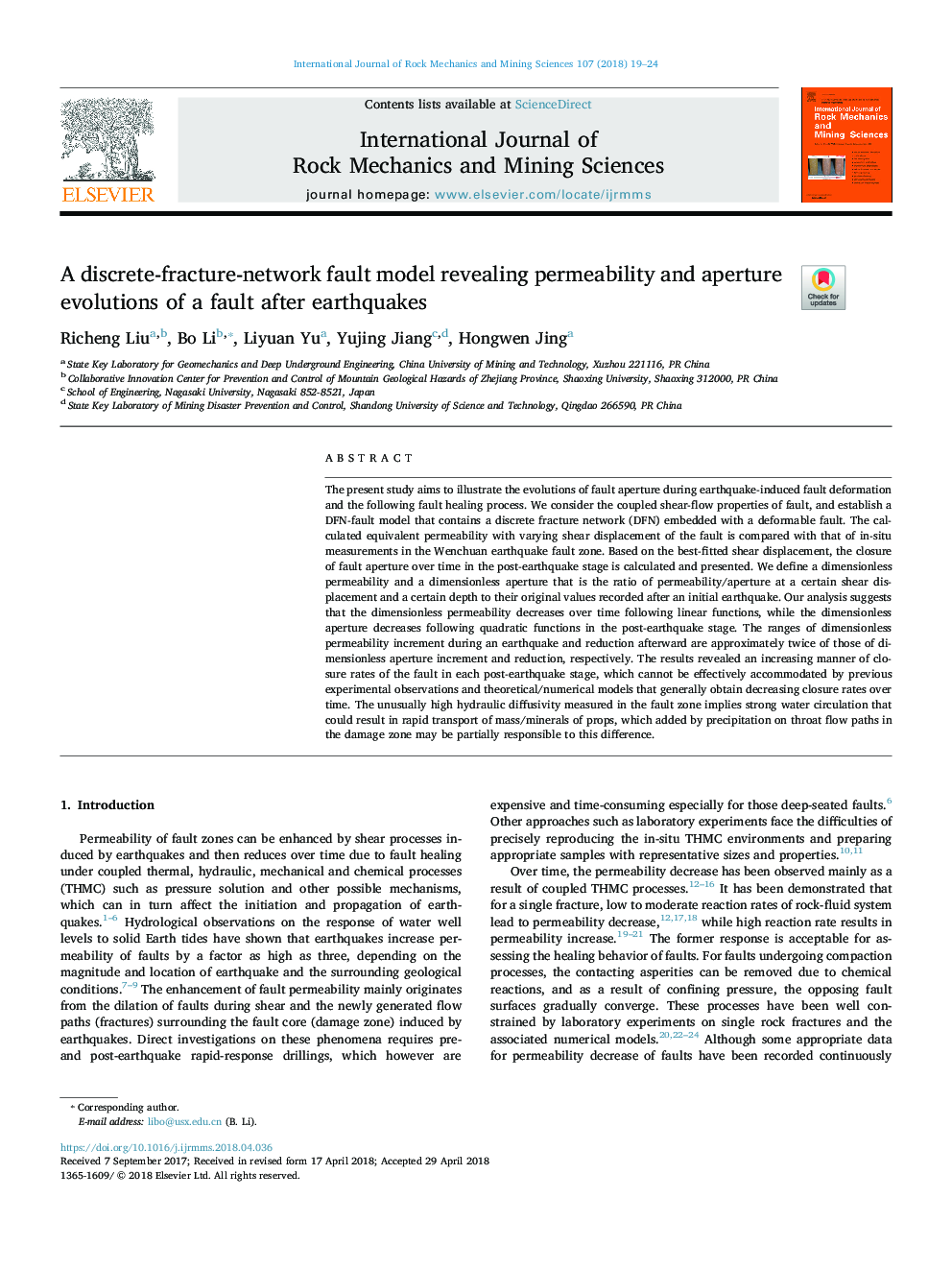| کد مقاله | کد نشریه | سال انتشار | مقاله انگلیسی | نسخه تمام متن |
|---|---|---|---|---|
| 7206152 | 1468662 | 2018 | 6 صفحه PDF | دانلود رایگان |
عنوان انگلیسی مقاله ISI
A discrete-fracture-network fault model revealing permeability and aperture evolutions of a fault after earthquakes
ترجمه فارسی عنوان
مدل گسل گسسته گسیختگی، نشان دهنده نفوذپذیری و تحول دیافراگم یک خطا پس از زلزله
دانلود مقاله + سفارش ترجمه
دانلود مقاله ISI انگلیسی
رایگان برای ایرانیان
موضوعات مرتبط
مهندسی و علوم پایه
علوم زمین و سیارات
مهندسی ژئوتکنیک و زمین شناسی مهندسی
چکیده انگلیسی
The present study aims to illustrate the evolutions of fault aperture during earthquake-induced fault deformation and the following fault healing process. We consider the coupled shear-flow properties of fault, and establish a DFN-fault model that contains a discrete fracture network (DFN) embedded with a deformable fault. The calculated equivalent permeability with varying shear displacement of the fault is compared with that of in-situ measurements in the Wenchuan earthquake fault zone. Based on the best-fitted shear displacement, the closure of fault aperture over time in the post-earthquake stage is calculated and presented. We define a dimensionless permeability and a dimensionless aperture that is the ratio of permeability/aperture at a certain shear displacement and a certain depth to their original values recorded after an initial earthquake. Our analysis suggests that the dimensionless permeability decreases over time following linear functions, while the dimensionless aperture decreases following quadratic functions in the post-earthquake stage. The ranges of dimensionless permeability increment during an earthquake and reduction afterward are approximately twice of those of dimensionless aperture increment and reduction, respectively. The results revealed an increasing manner of closure rates of the fault in each post-earthquake stage, which cannot be effectively accommodated by previous experimental observations and theoretical/numerical models that generally obtain decreasing closure rates over time. The unusually high hydraulic diffusivity measured in the fault zone implies strong water circulation that could result in rapid transport of mass/minerals of props, which added by precipitation on throat flow paths in the damage zone may be partially responsible to this difference.
ناشر
Database: Elsevier - ScienceDirect (ساینس دایرکت)
Journal: International Journal of Rock Mechanics and Mining Sciences - Volume 107, July 2018, Pages 19-24
Journal: International Journal of Rock Mechanics and Mining Sciences - Volume 107, July 2018, Pages 19-24
نویسندگان
Richeng Liu, Bo Li, Liyuan Yu, Yujing Jiang, Hongwen Jing,
